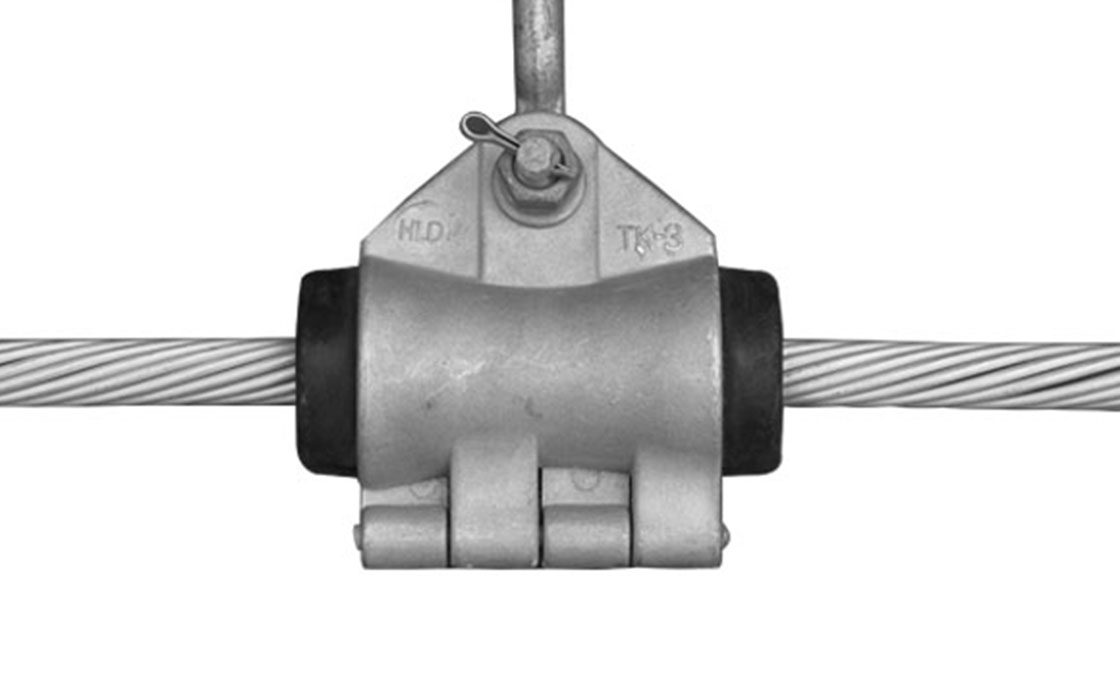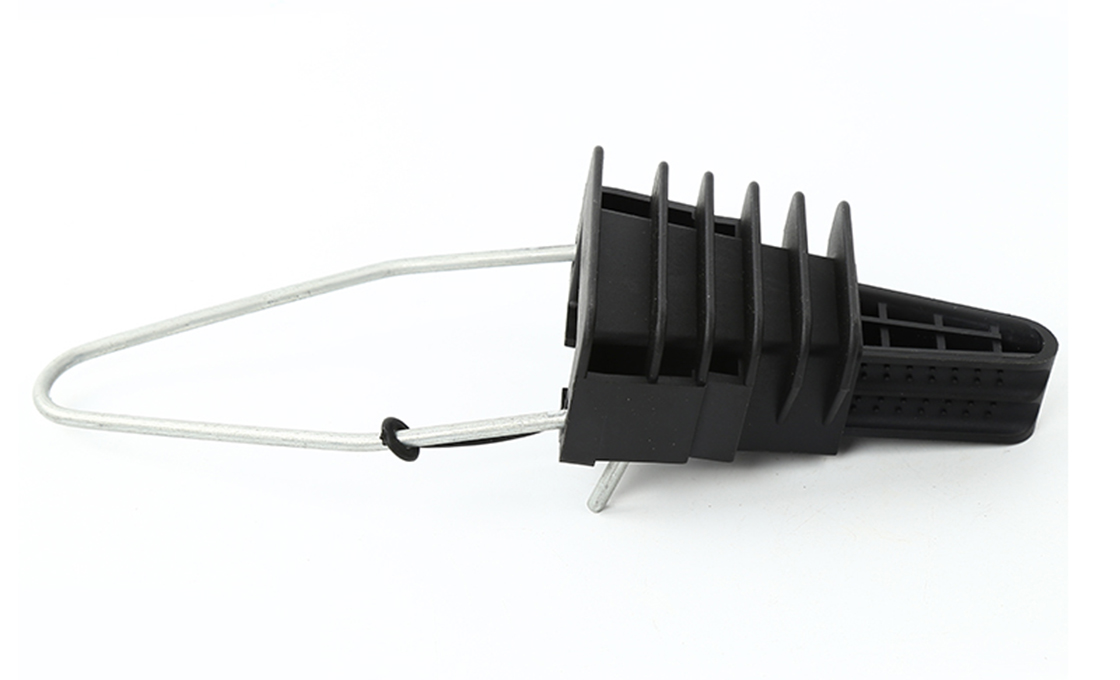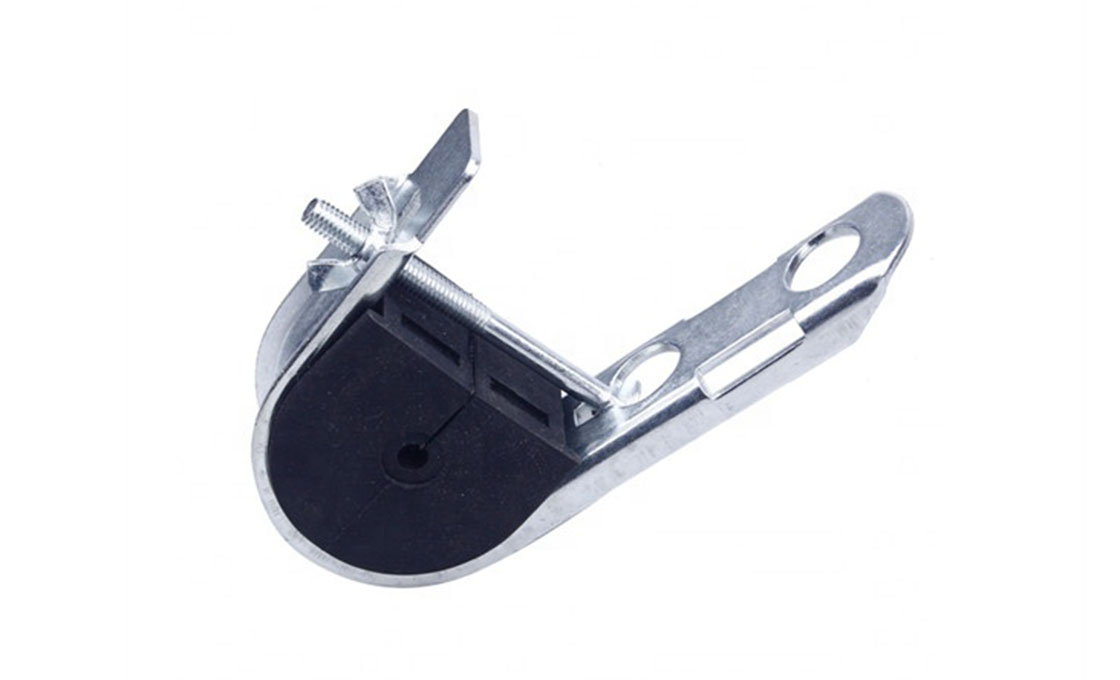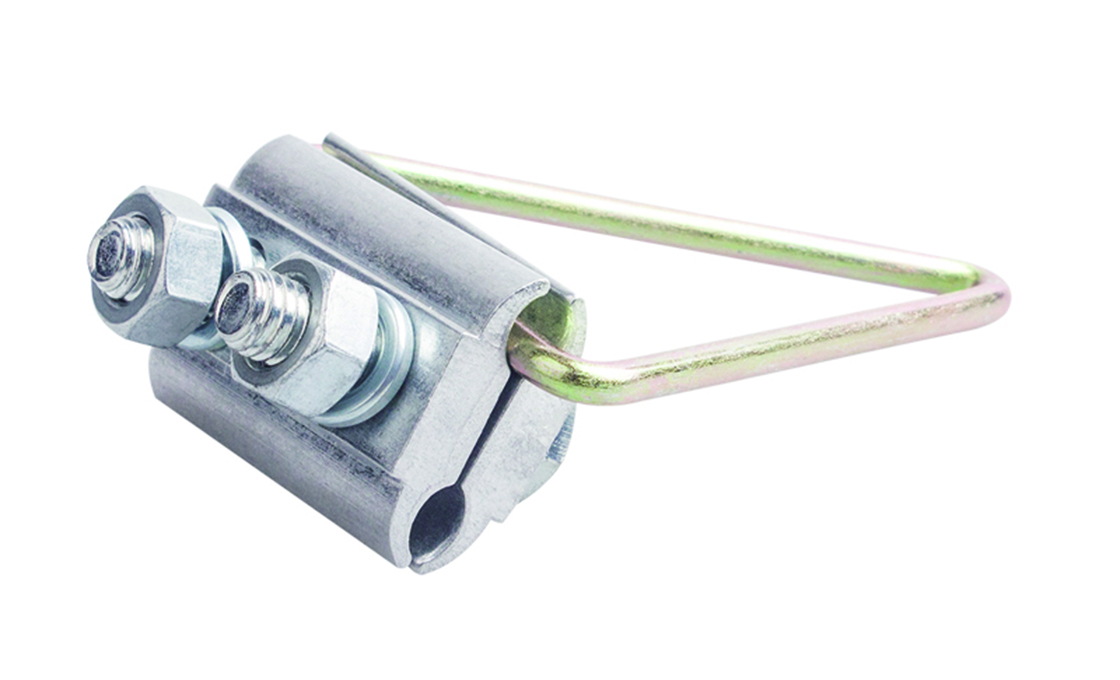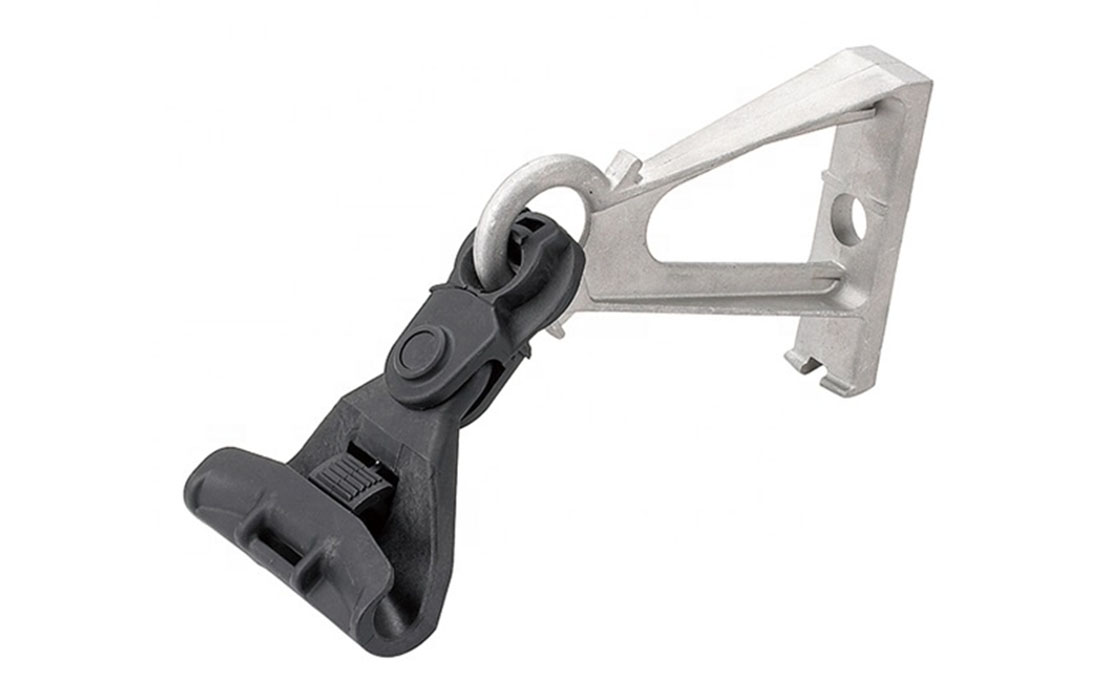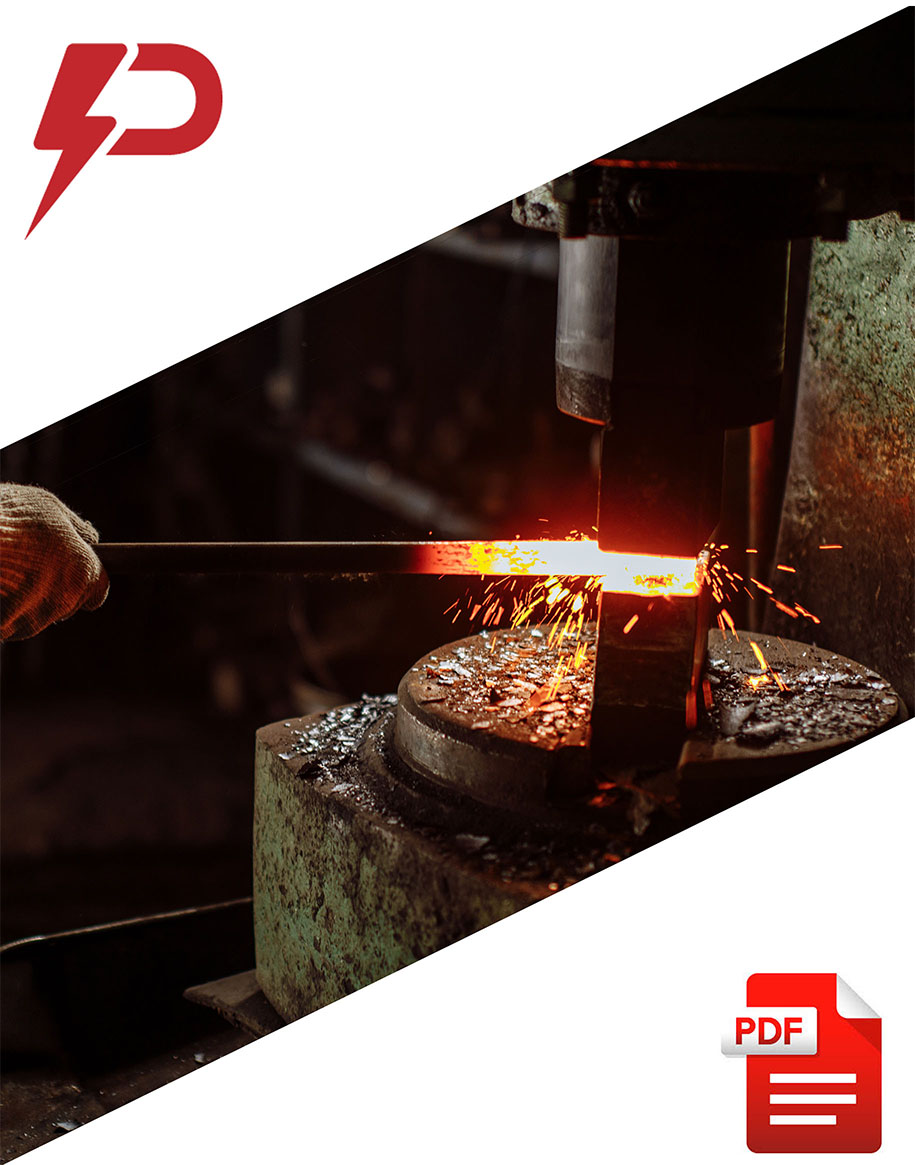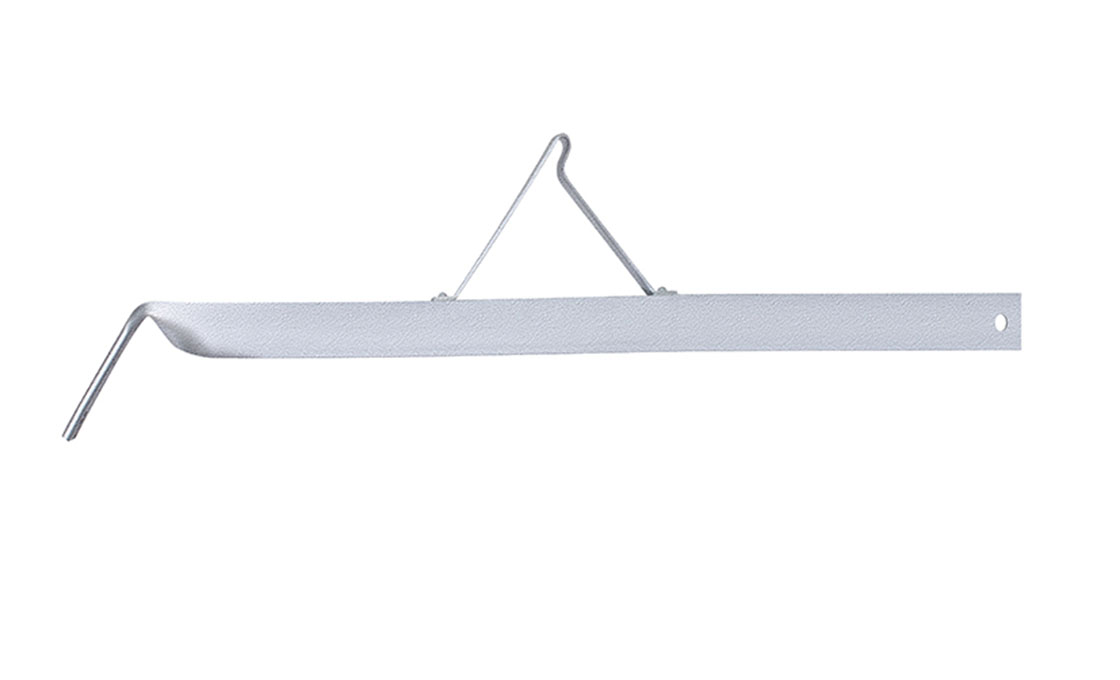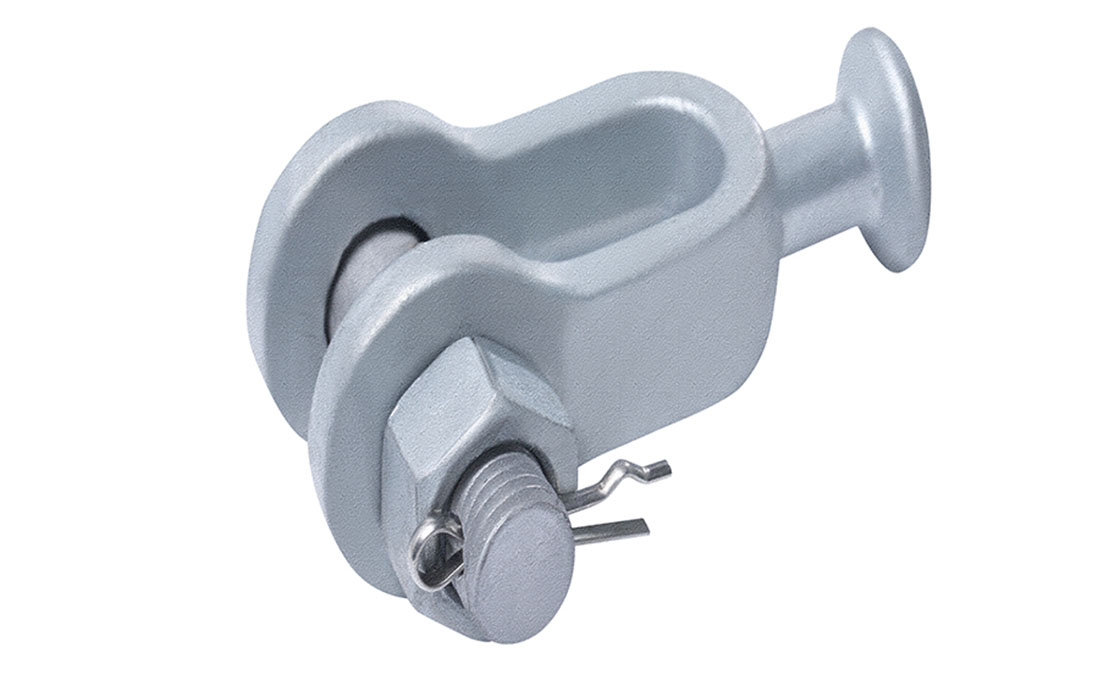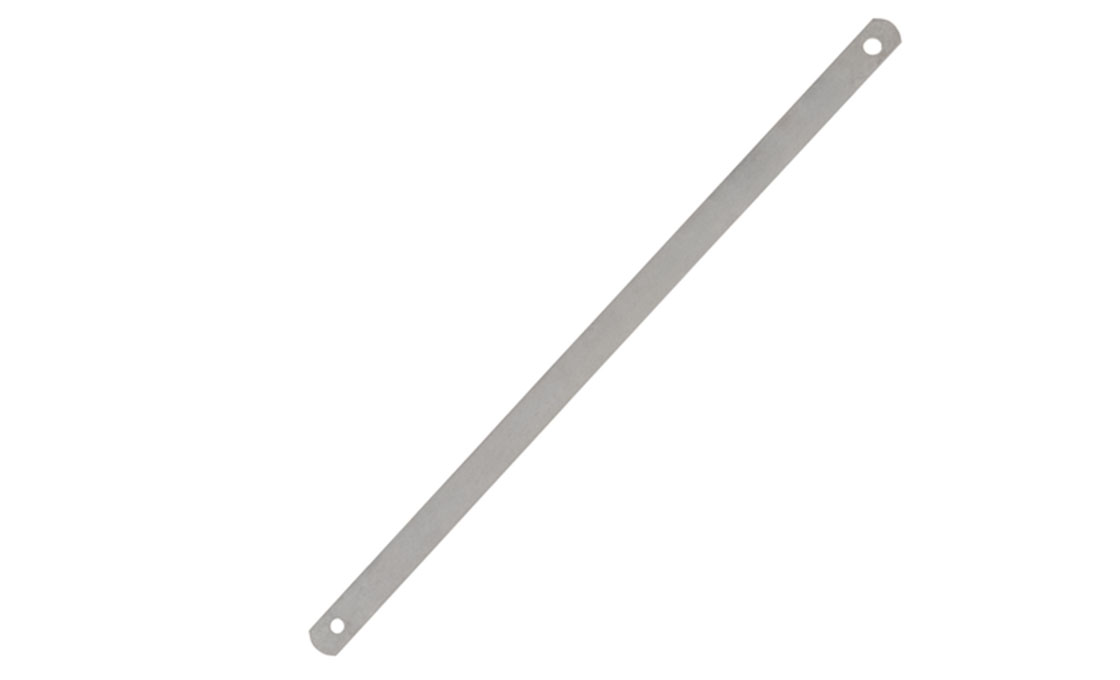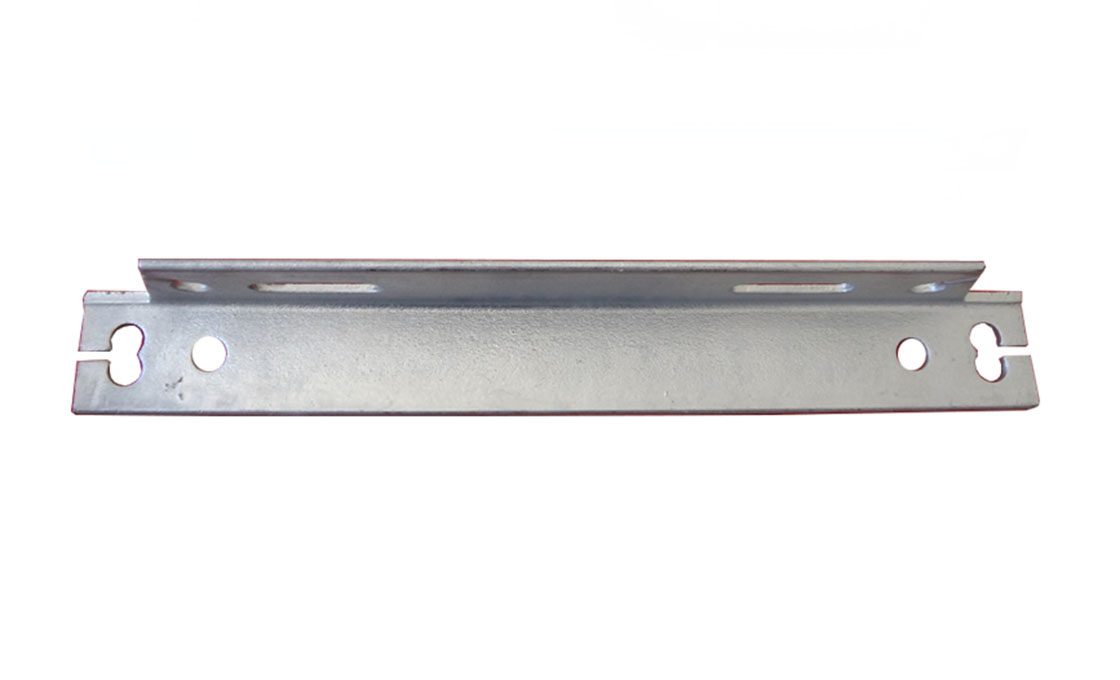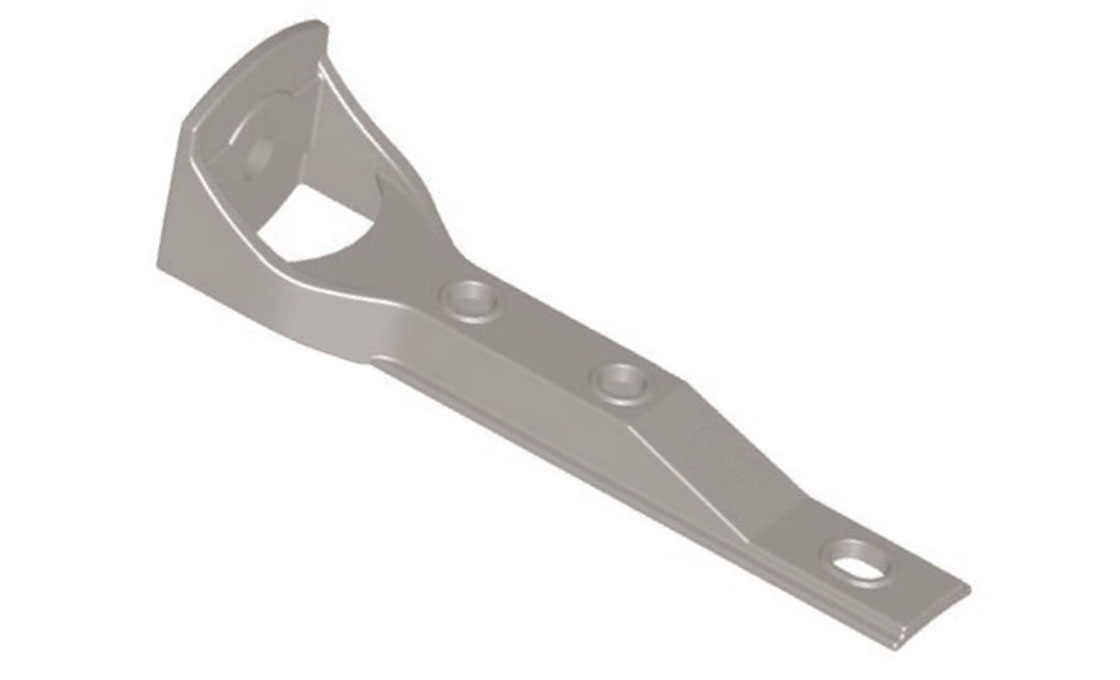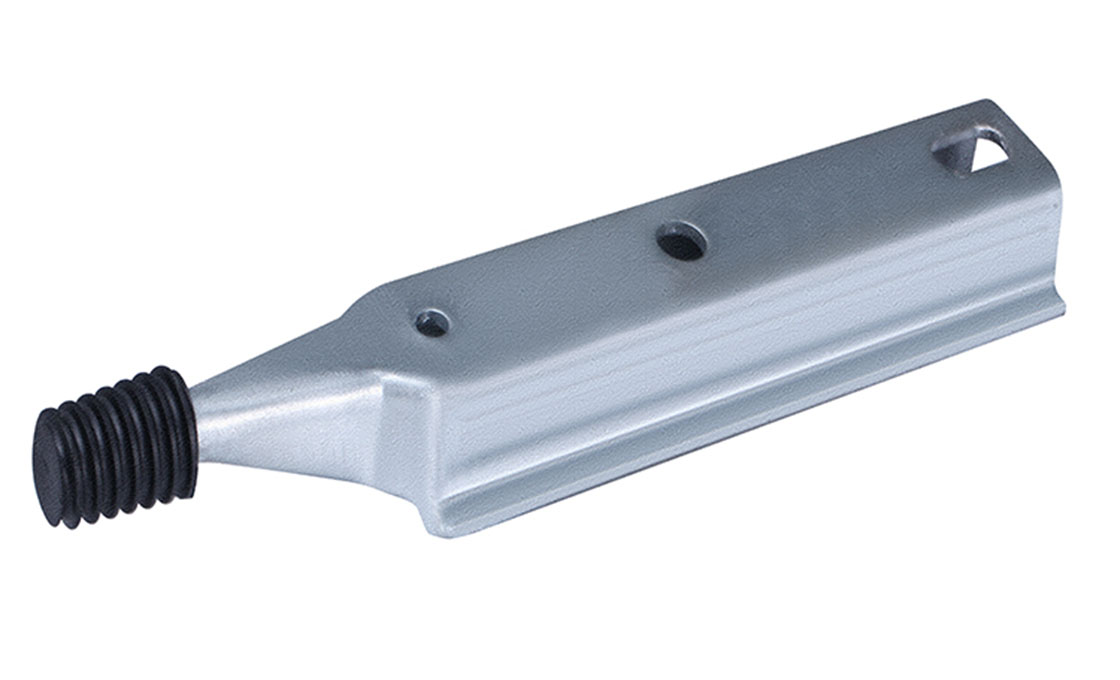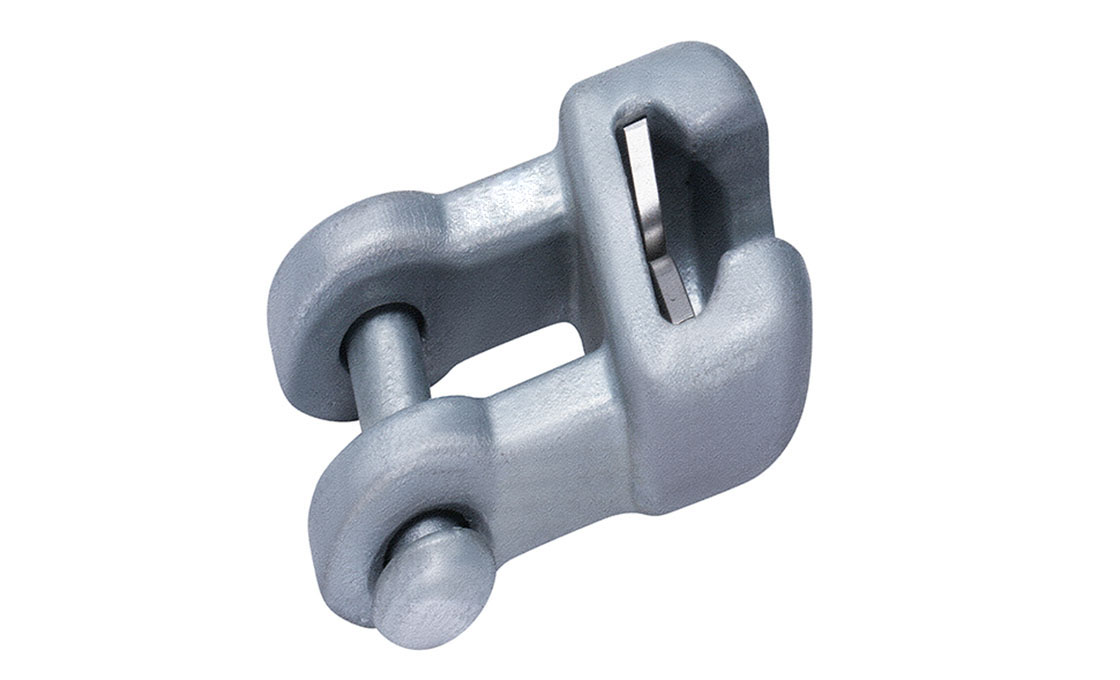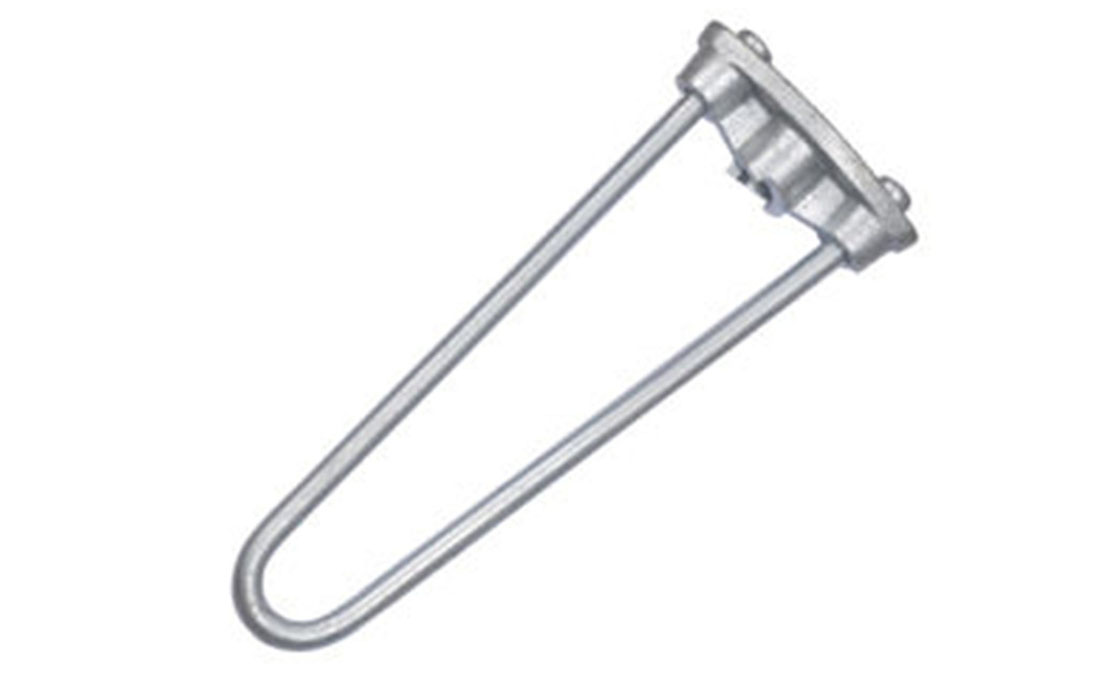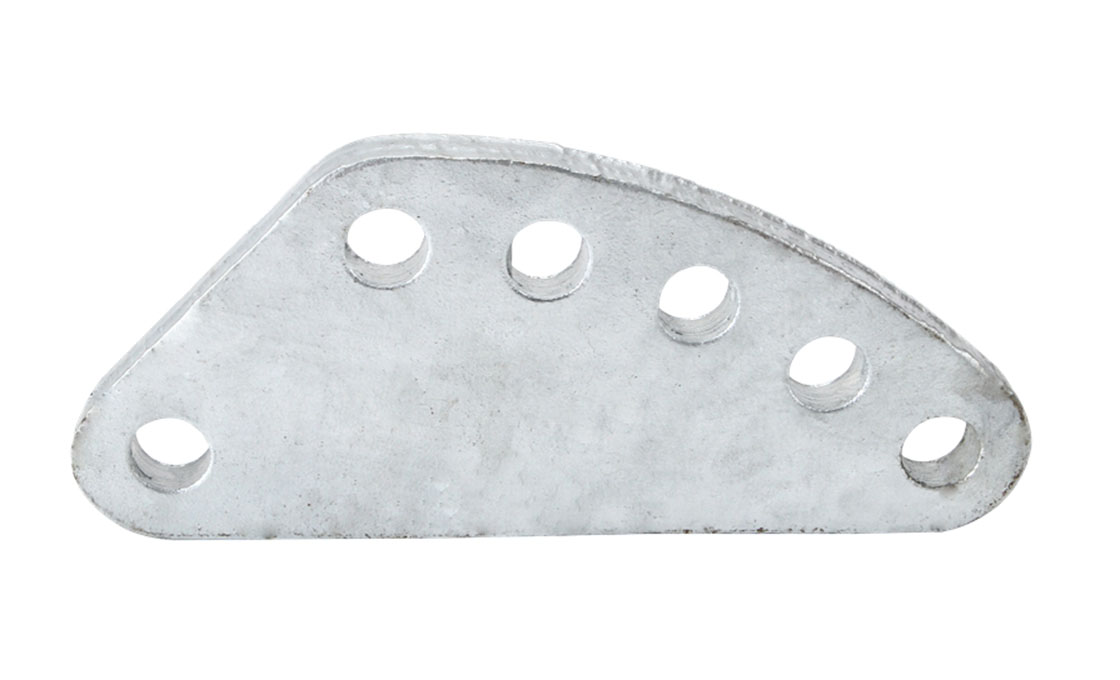Suspension Clamp
A suspension clamp is designed to give the conductors both physical and mechanical support. This is important especially when you have installed the conductors for the power transmission line and even telephone lines.
Suspension clamps enhance the stability of the conductor by limiting their movements especially against a strong wind, storm, and other vagaries of nature.
Made of galvanized steel, suspension clamps have adequate tensional strength to support the weight of conductors onto the perfect positions. The material is also resistant to corrosion and abrasion hence can serve its primary purpose for a long time.
Suspension clamps feature a clever ergonomic design that ensures that the weight of the conductor is evenly distributed on the clamp’s body. This design also provides perfect angles of connection for the conductor. In some cases, counterweights are added to prevent the conductor’s uplift.
Other fittings such as nuts and bolts are used along with the suspension clamps to enhance the connection with the conductors.
You may also request a custom design of a suspension clamp to suit your application area. This is vital since some suspension clamps are designed for single cables while others are for bundle conductors.
Suspension Clamp Complete Buying Guide
Are you setting up an overhead transmission line or telephone line project? One of the pole line accessories that you may consider buying is the suspension clamp. Like most accessories, this fitting has a significant role that it plays.
Are you looking for quality and affordable suspension clamps for transmission line or telecommunication line?
Here is a perfect guide for you.
I am going to give you full guidance for choosing and buying the best suspension clamps. I will also guide you on how to choose reliable suspension clamp suppliers and manufacturers in China.
What is a Suspension Clamp?
A suspension clamp is a fitting that is designed for suspending or hanging cables or conductors to the pole. In other cases, the clamp can suspend cables to the tower.
Since the cable is directly connected to the conductor, its specifications need to match with that of the cable so as to create a perfect connection.
A suspension clamp hangs the cables at different points and angles depending on the requirements of the project.
What are the Uses and Applications of a Suspension Clamp?
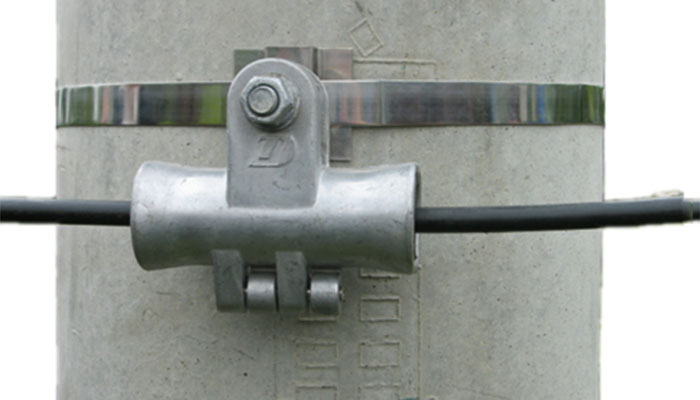 While the primary use of suspension clamp is to suspend hang or suspend a conductor, there are other roles that it plays.
While the primary use of suspension clamp is to suspend hang or suspend a conductor, there are other roles that it plays.
A suspension clamp protects the conductor during the installation of the transmission line onto the pole.
The clamp also provides a mechanical connection by ensuring that there the right longitudinal grip on the transmission line.
Suspension clamps also control the movement of cables against external forces such as wind and storm.
From the above listed uses, suspension clamp is applicable in different projects that have conductors hanging from poles.
The most common applications are electrical pole overhead lines and telephone transmission lines.
Parts and Components of Suspension Clamp
From a distance, you can easily assume that a suspension clamp is a single homogeneous accessory. The truth of the matter is a suspension clamp comprises of different parts which include:
1. The Body
The body is the supporting frame of a suspension clamp for the conductor. It supports the whole fitting.
The body is made of aluminium alloy which apart from being strong is also resistant to scratches and corrosion.
2. Keeper
The keeper of a suspension clamp plays the role of connecting the conductor of a transmission line to the body of the suspension clamp.
3. Straps
These are string-like structures that are responsible for transferring the load from the axis of oscillation straight to the insulator string.
These straps are capable of playing this role because they are made of coated zinc material.
4. Washers
The washers of a suspension clamp are usually put into use when the clamping surface is not rested perpendicularly.
They are made of steel to provide the necessary support while at the same time resist corrosion.
5. Bolts and Nuts
Since a suspension clamp is also a mechanical device, there will always be a need to secure all the connections.
This is where the role of bolts and nuts come into play. Any connection that is made to a suspension clamp is completed using bolts and nuts.
Bolts and nuts are also made of steel for strength and resist corrosion.
6. Threaded Inserts
When you see threads or bushings on a device, the first thing that should come into your mind is the device needs to be fastened.
The threaded inserts of a suspension clamp are simply fastening elements. They are inserted to elements that have threaded holes to complete the connection.
Threaded inserts are also made of stainless steel.
Types of Suspension Clamps
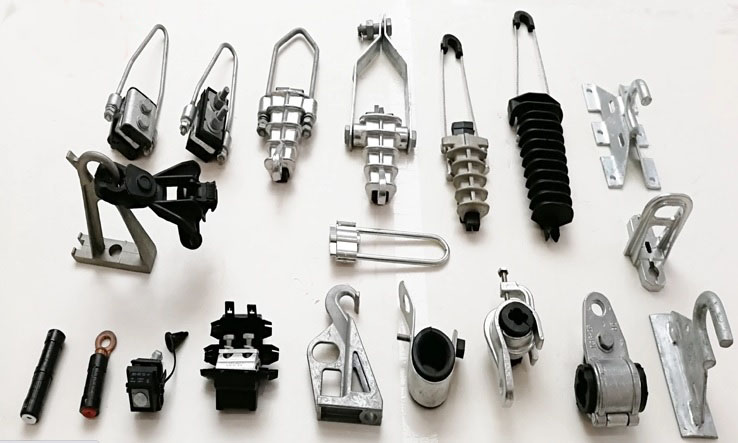 Suspension clamps are versatile power line fittings. They are not all the same. They come in different models making them suitable in their respective areas of applications.
Suspension clamps are versatile power line fittings. They are not all the same. They come in different models making them suitable in their respective areas of applications.
This simply means that a suspension clamp that designed for a particular use may not be suitable for another application.
Some are even cable-specific whereby they can only be used on specific types of conductors.
The most common types of suspension clamps include:
-AGS suspension clamp
-Suspension clamp for ABC cable
-Suspension clamp for ADSS cable
-Suspension clamp for OPGW cable
-Suspension clamp for HT< cable
-Preformed suspension clamp
-Cable suspension clamp u-type
-Double suspension clamp
Which cable are you using on your overhead transmission line? From the above list, you should be able to identify the right suspension clamp for the job.
If you are not sure, feel free to invite a suspension clamp expert who can help you choose the right model. Consultation with reliable suspension clamp manufacturers will also be helpful.
Design Requirements of Suspension Clamp
Apart from just worrying about the types of suspension clamps, you need to get into the outlook and functionalities of the clamp.
These two factors are defined by the design, mechanical and technical requirements of the pole line accessory.
A well-designed suspension clamp will ensure that there is a smooth coordination b with the cable and other components.
Some of the essential design aspects that you should focus on include:
-Anchor clamp: The anchor clamp, which is next to the conductor, should be able to move freely.
This design is achieved only if the trunnion of the clamp is part of the body.
-Design of straps: Before you buy a suspension clamp, ensure that its straps are round-shaped and their sizes match with the size of the trunnion.
-Conductor supporting groove: Ensure that the conductor supporting groove of a suspension clamp has the right measurements for your application.
On the other hand, the keeper should not have any sharp edges that can result in any irregularities.
-Bolts and Nuts: You should confirm the design requirements of bolts and nuts so that they can perfectly fit onto the suspension clamp when completing connections.
Ensure that the bolt of a suspension clamp can protrude through the threads.
Mechanical Requirements of Suspension Clamp
The mechanical requirements of the suspension clamp for the conductor define the operability of the suspension clamp.
How does a clamp operate or behave after it has finally been installed?
One of the most basic mechanical requirements is the suspension clamp should be able to withstand deformation load without snapping or undergoing physical damage.
Also, the clamp should sustain the force of bolts and nuts when they are being tightened.
Powertelcom-Suspension Clamp Manufacturer
Wondering where to buy quality suspension clamp for overhead lines?
The best answer is you should buy from reliable suspension clamp manufacturers and suppliers in China.
Reputable suspension clamp suppliers will do all that it takes to ensure that you get quality products.
You can also be sure of getting quality sales services from the best suppliers.
At Powertelcom, we are proud to be among the most-trusted suspension clamps suppliers in China.
If you would like to know more about suspension clamps for sale, take the step of contacting us directly. We will tell you everything that you should know about suspension clamps.
Frequently asked questions (FAQ)
What is a Suspension Clamp?
It is a transmission line hardware that is used for clamping cables and conductors to the insulator strings, poles, and even to the towers. The design and construction of the clamp can handle extreme loads of the insulators.
Why are suspension clamps used?
Suspension clamps provide the required mechanical support regardless of the condition of the conductor. They also control or restrict the movement of the conductor especially due to external forces such as wind and storm. The clamps also promote the safety of the conductor and people by preventing voltage leakage.
What are the types of suspension clamps?
The most common types of suspension clamps include:
-AGS suspension clamp
-Suspension clamp for ABC cable
-Suspension clamp for ADSS cable
-Suspension clamp for OPGW cable
-Suspension clamp for HT< cable
-Preformed suspension clamp
-Cable suspension clamp u-type
-Double suspension clamp
What are the parts of a suspension clamp?
The body forms the main component of the suspension clamp. It provides an attachment point for the conductor. The clamp has straps that transfer the load from the axis to the insulator strips. The washers provide support whenever the suspension clamp is attached perpendicularly. The nuts and bolts are used for completing connections.
What materials are used for suspension clamps?
All the materials for different components of the suspension clamp must be compatible with the conductor. Steel alloys and high-strength aluminum alloys are the two most common materials for the suspension clamp. Apart from the main clamping body, fasteners such as nuts and bolts are also made of corrosion-resistant steel.
